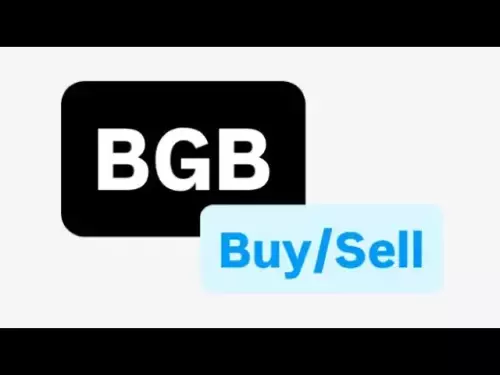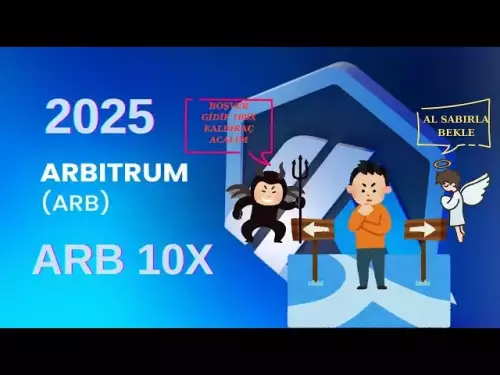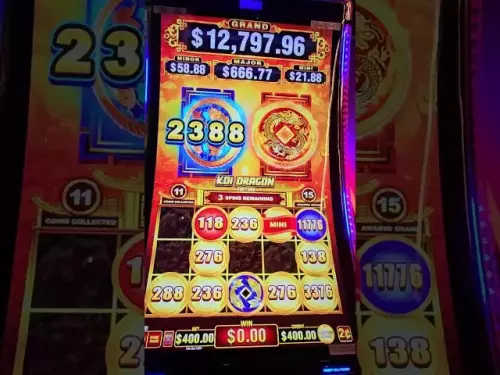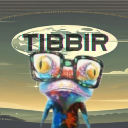-
 Bitcoin
Bitcoin $111000
1.68% -
 Ethereum
Ethereum $4289
-0.42% -
 XRP
XRP $2.830
2.60% -
 Tether USDt
Tether USDt $1.000
-0.01% -
 BNB
BNB $849.8
0.18% -
 Solana
Solana $208.0
4.92% -
 USDC
USDC $0.9999
0.00% -
 Dogecoin
Dogecoin $0.2130
1.23% -
 TRON
TRON $0.3371
0.04% -
 Cardano
Cardano $0.8289
3.22% -
 Chainlink
Chainlink $23.25
3.34% -
 Hyperliquid
Hyperliquid $44.68
3.12% -
 Ethena USDe
Ethena USDe $1.001
0.01% -
 Sui
Sui $3.318
2.93% -
 Bitcoin Cash
Bitcoin Cash $580.2
6.25% -
 Stellar
Stellar $0.3633
2.30% -
 Avalanche
Avalanche $24.40
5.43% -
 Hedera
Hedera $0.2200
3.20% -
 Cronos
Cronos $0.2739
3.94% -
 UNUS SED LEO
UNUS SED LEO $9.551
0.01% -
 Litecoin
Litecoin $111.0
1.76% -
 Toncoin
Toncoin $3.160
1.58% -
 Shiba Inu
Shiba Inu $0.00001235
2.28% -
 Polkadot
Polkadot $3.800
2.85% -
 Uniswap
Uniswap $9.501
1.73% -
 Bitget Token
Bitget Token $5.165
10.67% -
 World Liberty Financial
World Liberty Financial $0.2236
-9.69% -
 Dai
Dai $0.9998
-0.01% -
 Monero
Monero $267.2
2.64% -
 Aave
Aave $313.6
2.60%
What is the creator economy in Web3?
Web3 empowers creators with direct monetization, ownership control, and community governance through blockchain, NFTs, and decentralized platforms. (154 characters)
Sep 03, 2025 at 06:36 am
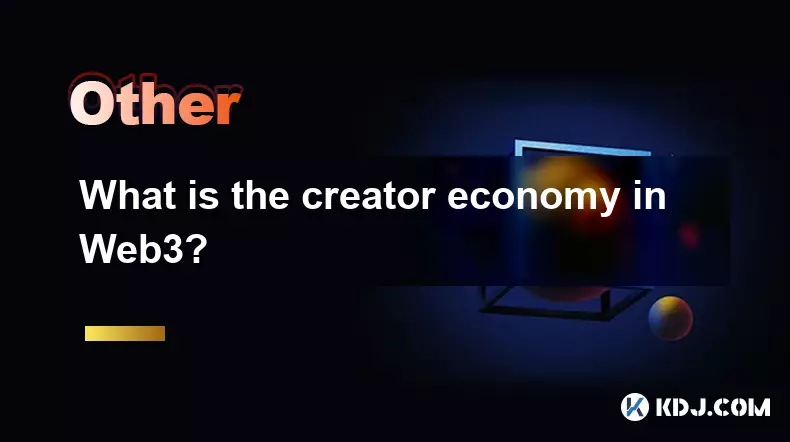
The Decentralized Foundation of Web3 Creator Platforms
1. Web3 redefines the creator economy by eliminating centralized intermediaries such as social media platforms and content aggregators. Instead, creators interact directly with their audiences through blockchain-based networks. This shift allows for transparent monetization models where revenue flows are recorded on public ledgers.
2. Smart contracts automatically execute payments when predefined conditions are met. For instance, a fan’s purchase of a digital collectible triggers instant royalty distribution to the creator without requiring a third-party processor. This automation reduces delays and administrative overhead.
3. Ownership of digital assets is verified through non-fungible tokens (NFTs). Creators can tokenize their work—music, art, videos—and retain verifiable authorship. Fans gain provable ownership, enabling them to resell or trade these assets in open markets.
4. Decentralized autonomous organizations (DAOs) allow communities to govern platforms collectively. Creators and supporters vote on platform upgrades, revenue-sharing mechanisms, and policy changes. This democratic structure ensures alignment between creators and their audiences.
5. Identity in Web3 is self-sovereign. Artists use decentralized identifiers (DIDs) to maintain control over their online presence. They can move across platforms without losing reputation or audience data, reducing dependency on single ecosystems.
Monetization Models Beyond Ad Revenue
1. Tokenized memberships enable fans to purchase access to exclusive content using cryptocurrencies. These tokens can grant voting rights, early releases, or special experiences. The scarcity and utility of these tokens increase their perceived value.
2. Royalty programming is embedded directly into digital assets. Every time an NFT changes hands, a percentage flows back to the original creator. This perpetual royalty system ensures long-term compensation, unlike traditional platforms where earnings stop after the initial sale.
3. Crowdfunding in Web3 occurs through token launches or NFT drops. Instead of relying on venture capital or ad sponsors, creators raise funds directly from their community. Contributors receive tokens representing stake or access, aligning incentives from the outset.
4. Direct peer-to-peer tipping is frictionless and global. Supporters send cryptocurrency to creators without geographic restrictions or high transaction fees. Wallet integrations in content platforms make microtransactions practical and immediate.
5. Revenue splits are transparent and immutable. All transactions related to a piece of content are visible on-chain. Creators can prove income for partnerships or loans without relying on opaque platform reports.
User Engagement Through Ownership and Participation
1. Fans become stakeholders when they hold creator-specific tokens. Their financial interest encourages active promotion and community moderation. This transforms passive audiences into invested participants.
2. Interactive experiences are built using programmable NFTs. For example, owning a specific digital collectible might unlock participation in a virtual concert or a collaborative artwork. Engagement is tied directly to ownership.
3. Gamified loyalty systems reward consistent support. Users accumulate points through interactions like sharing, commenting, or purchasing. These points can be redeemed for rare items or influence over future creative directions.
4. Cross-platform utility enhances value. A token earned on one application can be used for access or voting on another. Interoperability increases user retention and deepens engagement across the ecosystem.
5. Community-driven curation replaces algorithmic feeds. Users stake tokens to promote content they believe in, creating a merit-based discovery mechanism. This reduces manipulation and prioritizes authentic engagement.
Frequently Asked Questions
How do creators verify authenticity of their work in Web3?Each piece of content is linked to a unique digital fingerprint stored on the blockchain. This cryptographic signature proves originality and creation date, making forgery nearly impossible.
What prevents copycats from uploading someone else’s content as an NFT?While anyone can mint an NFT of a public image, provenance and reputation matter. Audiences rely on verified wallet addresses and community trust to distinguish legitimate creators from impersonators.
Can creators earn from secondary sales on any marketplace?Yes, if the smart contract includes a royalty clause. This code executes automatically whenever the NFT is resold, regardless of the marketplace used.
How do fans benefit beyond owning digital items?Ownership often includes access to private communities, decision-making power, or real-world perks. Some tokens grant entry to events or collaborative opportunities with the creator.
Disclaimer:info@kdj.com
The information provided is not trading advice. kdj.com does not assume any responsibility for any investments made based on the information provided in this article. Cryptocurrencies are highly volatile and it is highly recommended that you invest with caution after thorough research!
If you believe that the content used on this website infringes your copyright, please contact us immediately (info@kdj.com) and we will delete it promptly.
- Shiba Inu: Decentralization and Community Focus – A New Yorker's Take
- 2025-09-03 12:25:15
- Crypto, Congressman Collins, and Institutional Sentiment: A New York Minute on Market Influence
- 2025-09-03 10:25:13
- PUMP Price Surges: Pump.fun's User Growth Strategy Under the Microscope
- 2025-09-03 10:45:11
- PUMP Token, Solana, and Project Ascend: Riding the Meme Coin Wave
- 2025-09-03 07:05:12
- Cardano's DeFi Surge: Airdrops, ADA Price, and Ecosystem Growth – Oh My!
- 2025-09-03 08:45:13
- Dogecoin's Next Chapter: Price Predictions and the Institutional Adoption Wave
- 2025-09-03 10:45:11
Related knowledge
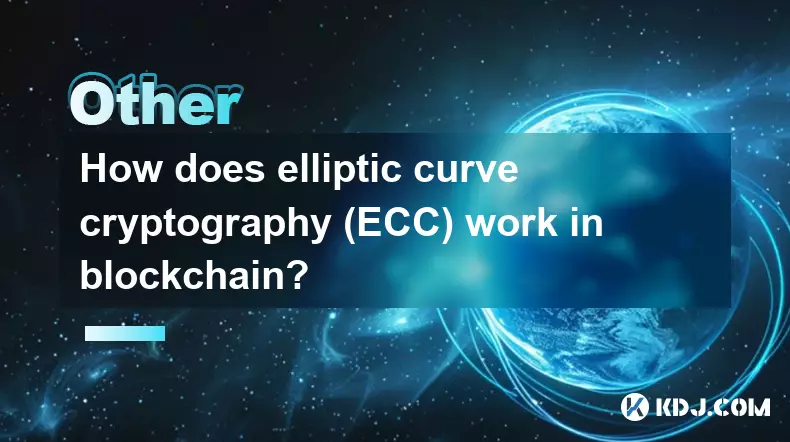
How does elliptic curve cryptography (ECC) work in blockchain?
Sep 03,2025 at 11:55am
Understanding Elliptic Curve Cryptography in Blockchain1. Elliptic Curve Cryptography (ECC) plays a foundational role in securing blockchain networks....
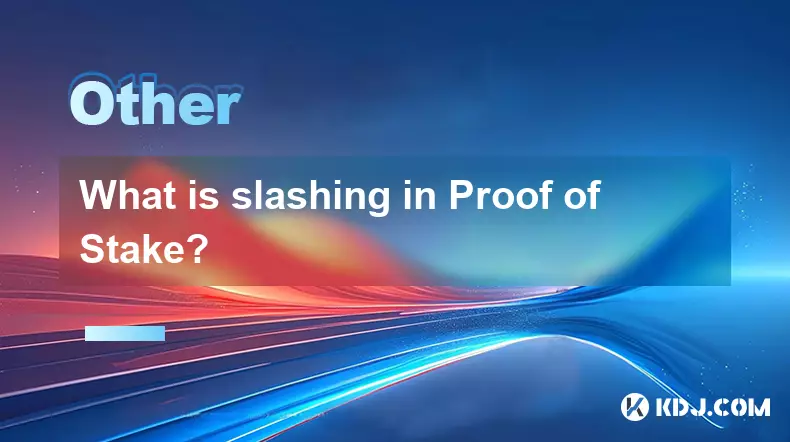
What is slashing in Proof of Stake?
Sep 03,2025 at 10:00am
Understanding Slashing in Proof of Stake Networks1. Slashing is a penalty mechanism used in Proof of Stake (PoS) blockchain systems to enforce honesty...

How do you participate in a project's governance?
Sep 02,2025 at 09:01pm
Understanding Governance in Blockchain Projects1. Governance in blockchain ecosystems allows token holders to influence the direction and policies of ...
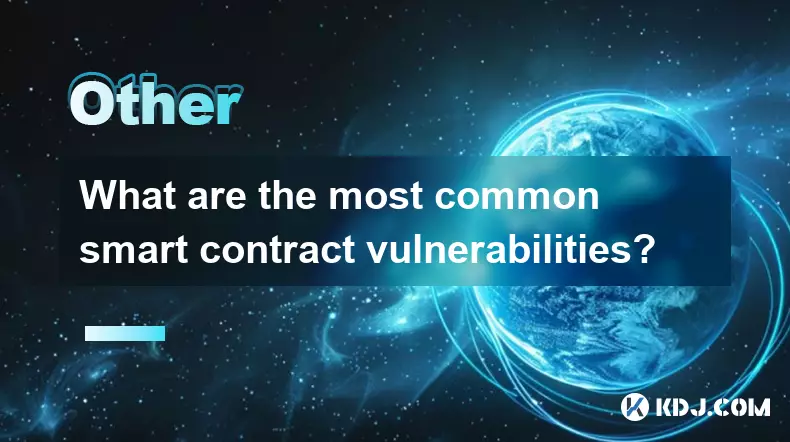
What are the most common smart contract vulnerabilities?
Sep 03,2025 at 09:18am
Reentrancy Attacks1. Reentrancy is one of the most notorious vulnerabilities in smart contracts, famously exploited in the DAO attack. It occurs when ...
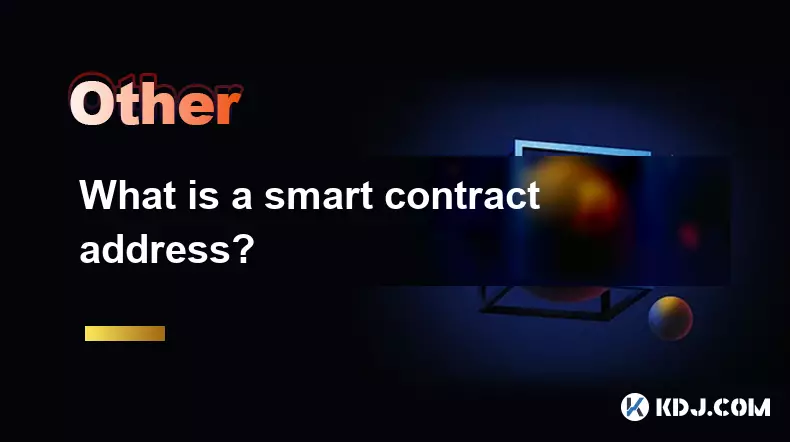
What is a smart contract address?
Sep 03,2025 at 04:36am
Understanding Smart Contract Addresses in BlockchainA smart contract address is a unique identifier on a blockchain network where a smart contract res...
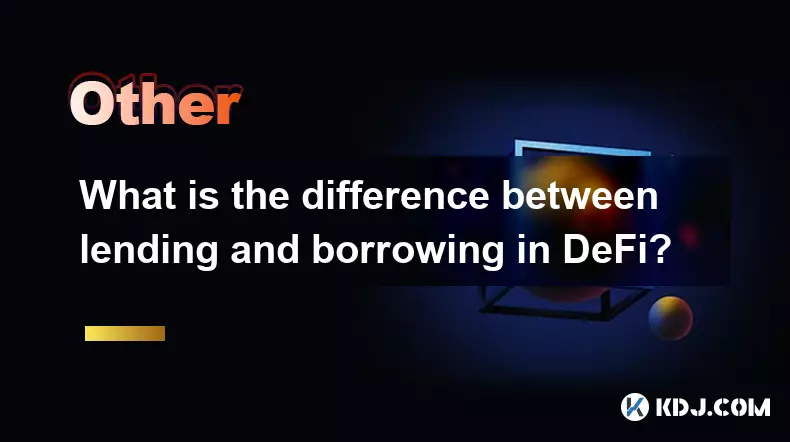
What is the difference between lending and borrowing in DeFi?
Sep 03,2025 at 12:00am
Understanding DeFi Lending Mechanisms1. DeFi lending allows users to supply their crypto assets to a liquidity pool in exchange for interest payments....

How does elliptic curve cryptography (ECC) work in blockchain?
Sep 03,2025 at 11:55am
Understanding Elliptic Curve Cryptography in Blockchain1. Elliptic Curve Cryptography (ECC) plays a foundational role in securing blockchain networks....

What is slashing in Proof of Stake?
Sep 03,2025 at 10:00am
Understanding Slashing in Proof of Stake Networks1. Slashing is a penalty mechanism used in Proof of Stake (PoS) blockchain systems to enforce honesty...

How do you participate in a project's governance?
Sep 02,2025 at 09:01pm
Understanding Governance in Blockchain Projects1. Governance in blockchain ecosystems allows token holders to influence the direction and policies of ...

What are the most common smart contract vulnerabilities?
Sep 03,2025 at 09:18am
Reentrancy Attacks1. Reentrancy is one of the most notorious vulnerabilities in smart contracts, famously exploited in the DAO attack. It occurs when ...

What is a smart contract address?
Sep 03,2025 at 04:36am
Understanding Smart Contract Addresses in BlockchainA smart contract address is a unique identifier on a blockchain network where a smart contract res...

What is the difference between lending and borrowing in DeFi?
Sep 03,2025 at 12:00am
Understanding DeFi Lending Mechanisms1. DeFi lending allows users to supply their crypto assets to a liquidity pool in exchange for interest payments....
See all articles























